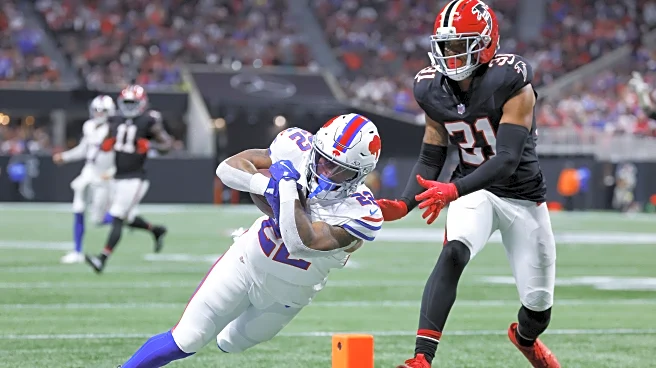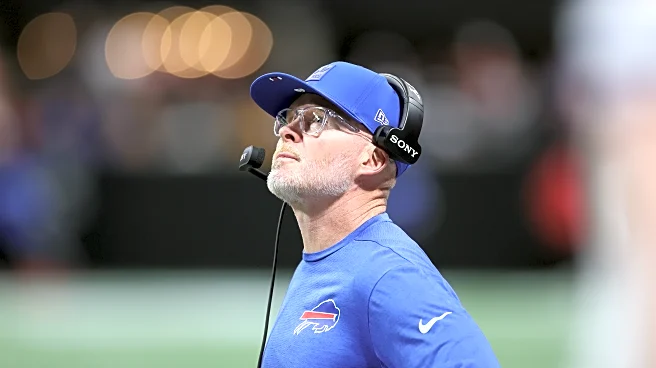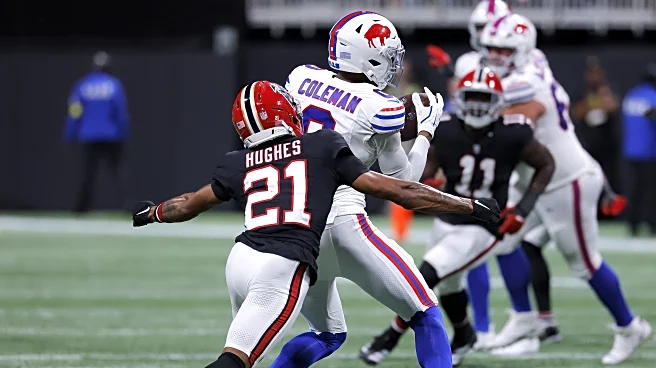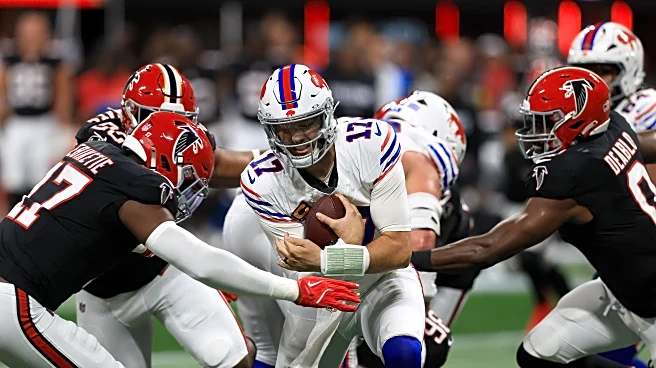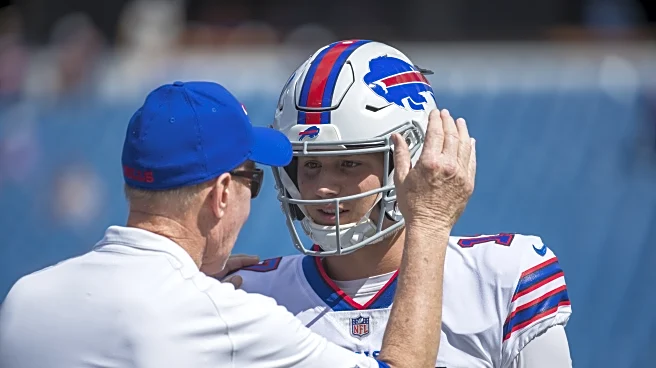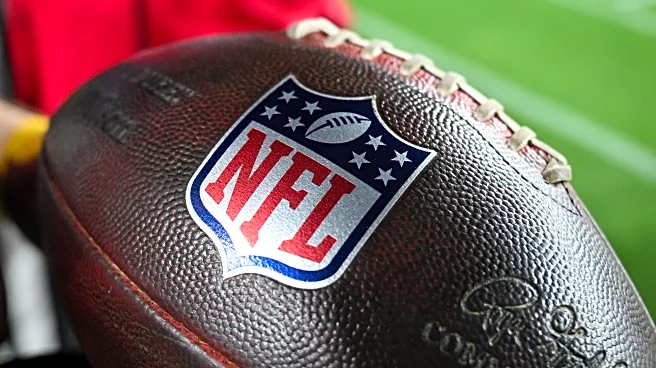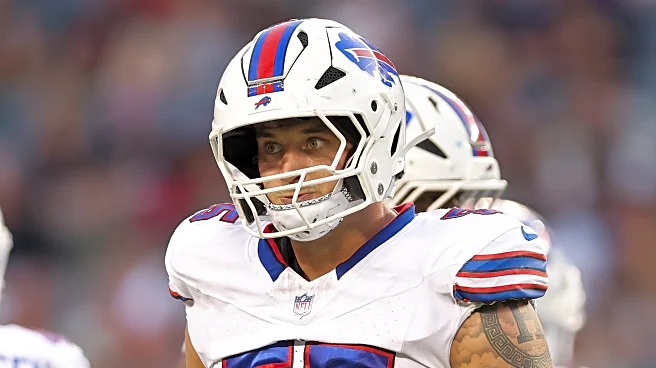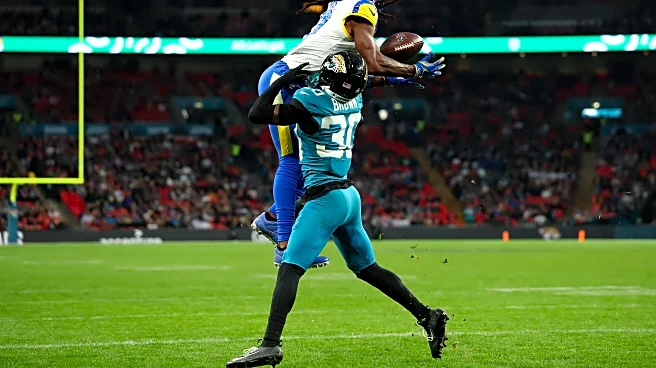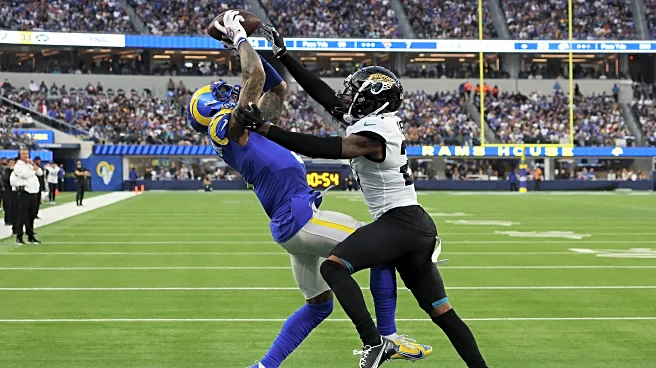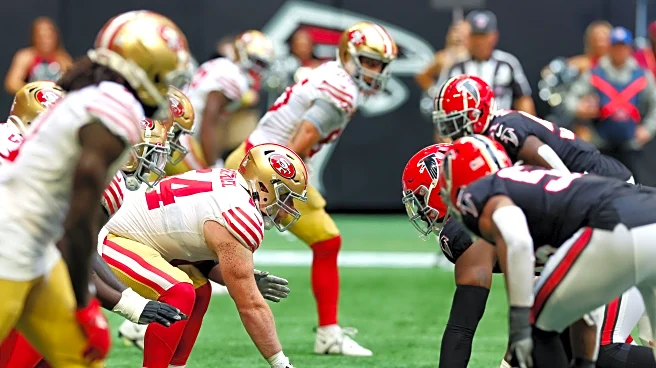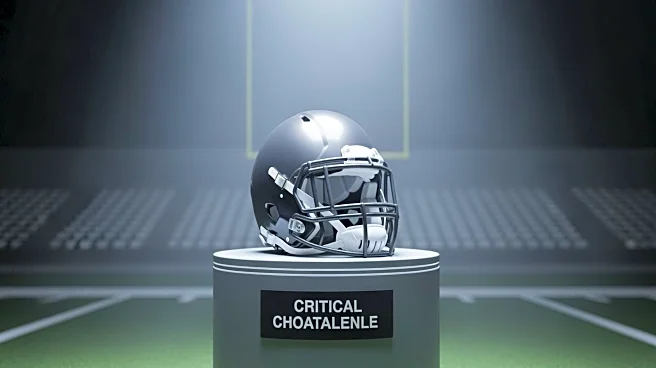After six weeks, the Buffalo Bills have the kind of offense that most NFL teams envy. They rank fourth in the NFL in points per game (27.8), third in the NFL in total yards (2,270), second in the NFL in rushing
yards and rushing touchdowns (906 and 9, respectively), and 13th in passing yardage (1,364) despite ranking only 21st in passing attempts (180). Buffalo also averages the sixth-most yards per drive in the league (35.3) while averaging the fifth-most points per drive (2.66).
Overall, the numbers really like the Bills’ offense.
However, after six games, Buffalo’s offense has shown some distressing tendencies in addition to all of those rosy metrics. For all their offensive successes, the team has gone long stretches of play where they seem lost on offense. Whether it’s penalties, scheme, or something else entirely, the Bills’ offense has been a Jekyll & Hyde group in the early part of the season.
No breakdown better captures that inconsistency than the team’s drives to begin a half of football. When compared to the rest of the their drives, the Bills have been significantly more effective in those “first” drive scenarios than they have been for the rest of their time on offense. Those first drives of halves, whether it’s the first drive of the first quarter or the first drive out of halftime, are generally scripted by the offensive coordinator, meaning that the team has essentially had a dress rehearsal of those play calls leading into the contest.
That practice shows up in the numbers. Buffalo has played six games, so they’ve had 12 drives to open a half. On those drives, they’ve scored touchdowns on 10 of them, adding one field goal and one fumble by Josh Allen on a botched jet sweep handoff attempt to tight end Dawson Knox. Buffalo’s touchdown percentage on those half-opening drives is an absurd 83%, with 92% of their half-opening drives ending in points for the Bills. They average 65.2 yards per first-half opening drive, and 66.2 yards per second-half opening drive.
In short, the Bills have been deadly in scripted-play scenarios this season.
However, that efficiency takes a nose-dive when accounting for literally every other offensive scenario the Bills have encountered this season. Aside from those opening drives, Buffalo has had 52 other offensive possessions. When we remove end-of-half scenarios where they were either kneeling (like at the end of a blowout victory over the New York Jets) or trying to take it to halftime without giving up more points (like the drive that started at their own three-yard line late in the first half against the New Orleans Saints), that takes us down to 46 total possessions.
Buffalo has scored the same number of touchdowns (10) in these other scenarios as they have in their 12 half-opening drives. The Bills have scored nine field goals in these “other” scenarios, bringing their total number of scores to 19 drives ending in points on 46 tries. That equates to a score on just 41% of possessions, and the Bills average just 31.8 yards per drive when it isn’t a drive to open a half. If we include the kneel-downs, that efficiency number drops to a 37% score rate and just 28.6 yards per drive.
Should we expect Buffalo to score on 90% of its possessions? Of course not — after all, this isn’t Madden. Such a wild swing in efficiency, though, does suggest some things about what, exactly, the Bills are doing offensively once they stray from the script. Does the team stop doing what works when the game progresses? Is the team, and specifically offensive coordinator Joe Brady, slow to react to adjustments made by their opponents? Are opposing defenses trying to show more “vanilla” looks on the first drive to lull the Bills into a false sense of security?
For what it’s worth, Buffalo is ranked sixth in scoring percentage, as a total of 46.9% of their offensive possessions have ended in scores this season. Using our control numbers, they would drop to 17th if we excluded their half-opening drives, slotting right in between the Los Angeles Rams and Miami Dolphins. That means the Bills have been essentially a league-average offense in every scenario except half-opening drives, which is where they turn into an absolute juggernaut.
Given the wide disparity in efficiency, and knowing that the team is significantly better in scripted scenarios than they are in other scenarios, I think it points to the team’s offensive lulls being more an issue of scheme and adjustments than talent. The talent on the field is the same to start the first and second halves as it is at every other point in the game, and the Bills have shown the ability to dominate in some scenarios with the same talent that looks completely lost in others.
Fans, pundits, and even head coach Sean McDermott have accused offensive coordinator Joe Brady of straying from what Buffalo does best, saying that some of his more recent play-calling efforts have come off as “too cute.” Sometimes, the best offense is the offense that stays on schedule, sticks to the script, and spams what works. Brady would be wise to look to his own script to find the adjustments he needs to make in order to keep the offense on track.
All statistical data courtesy of Pro Football Reference
